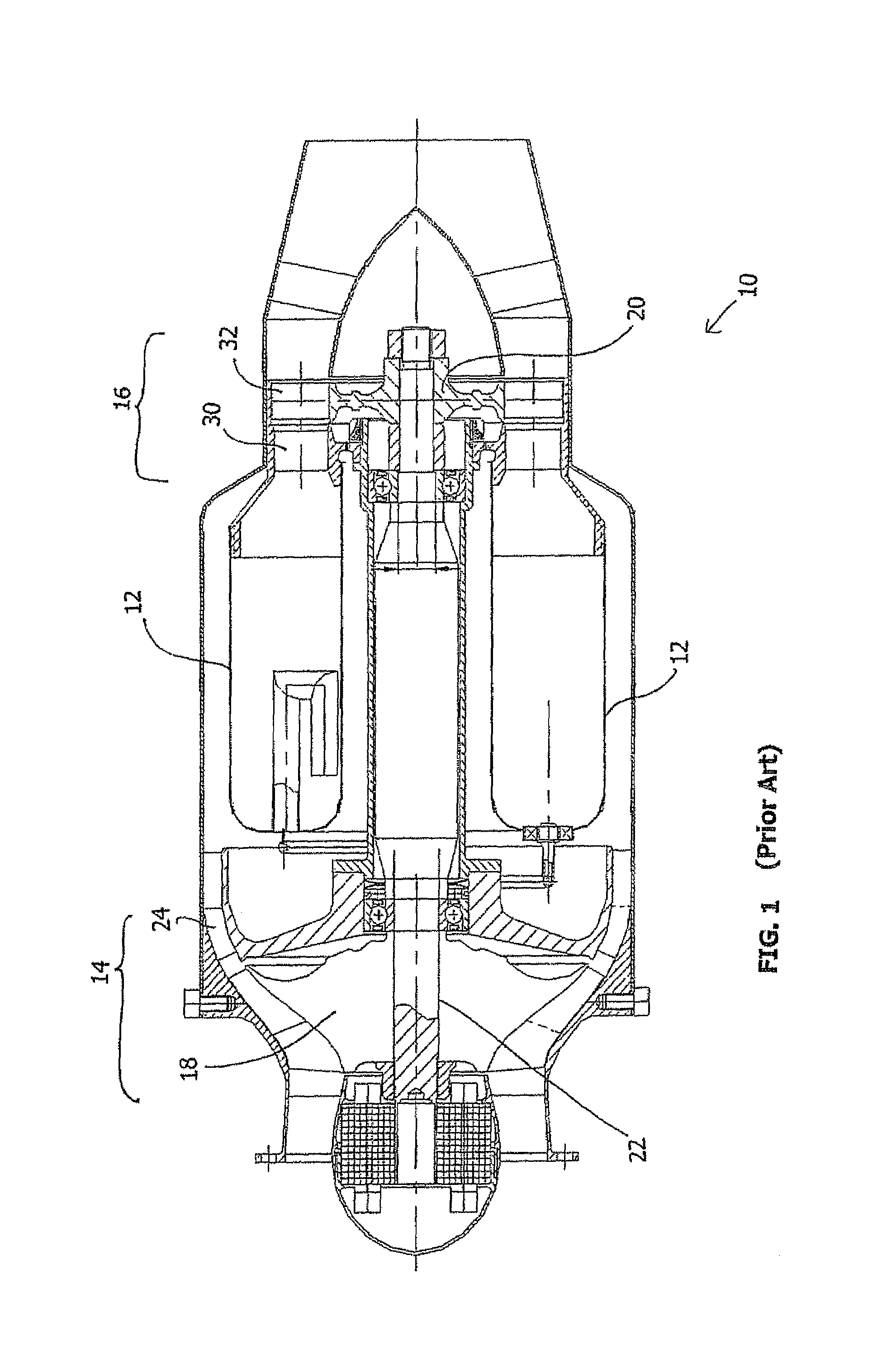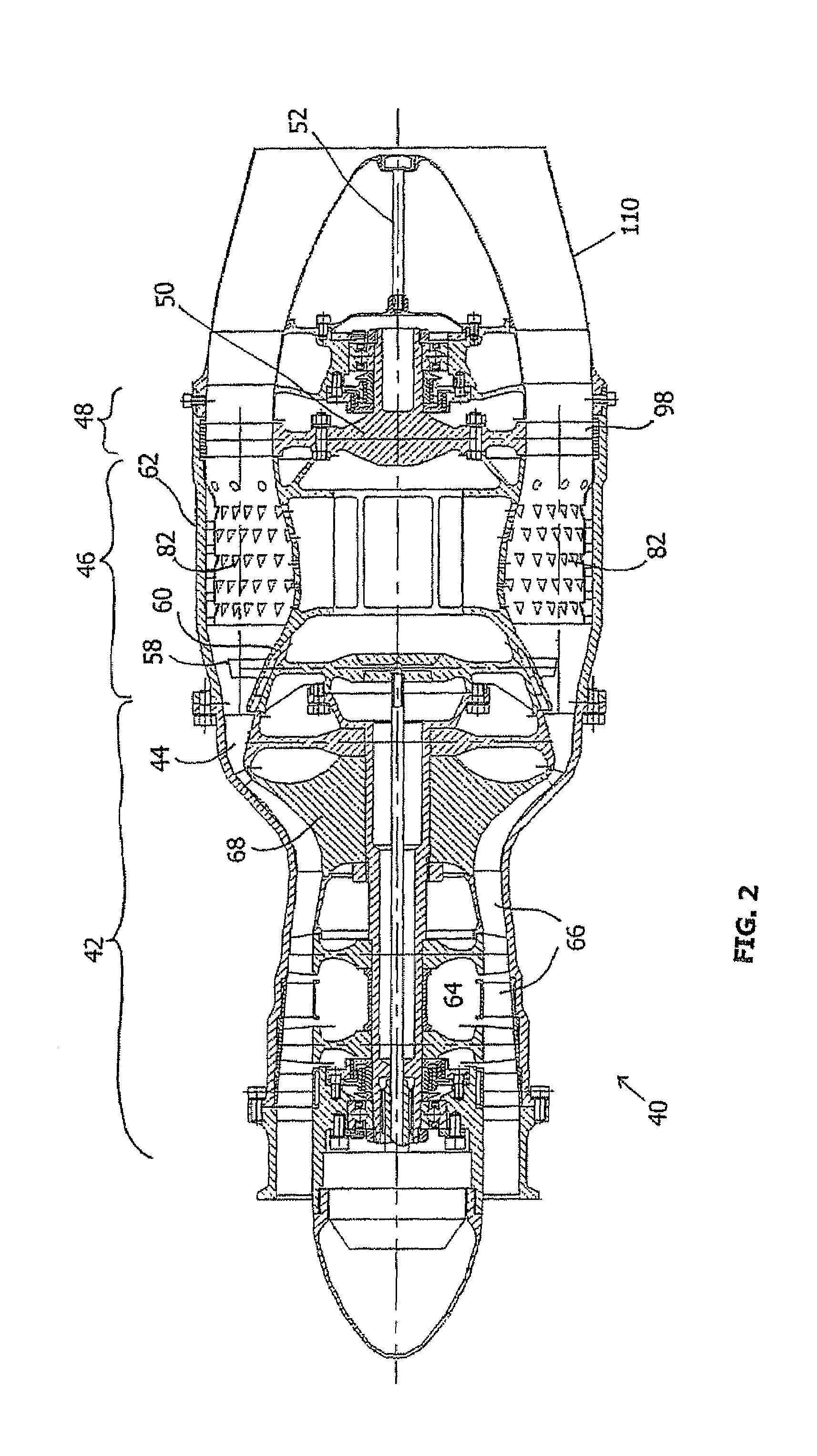Orbiting combustion nozzle engine
a combustion nozzle and engine technology, applied in the field of engines, can solve the problems of inefficiency utilization, one weakness of prior art turbine engines, and b>10/b> in the turbine, and achieve the effects of reducing pressure drop, low vortex angular velocity, and reducing pressure drop
- Summary
- Abstract
- Description
- Claims
- Application Information
AI Technical Summary
Benefits of technology
Problems solved by technology
Method used
Image
Examples
Embodiment Construction
[0051]The engine of the present invention is characterized in having a rotating assembly comprising a co-rotating compressor and nozzle wheel enclosed within a non-rotating outer casing, thus defining a rotating combustion chamber. Since, in contrast to prior art turbines, in the engine of the present invention there is no turbine wheel and torque is generated using a rotating nozzle wheel, and because combustion occurs in a vortex of air rotating together with the rotating assembly, the engine of the present invention is called an orbiting combustion nozzle (OCN) engine.
[0052]The principles and operation of an OCN engine according to the present invention may be better understood with reference to the drawings and the accompanying description. In the drawings, like references designate equivalent parts
[0053]A typical, non-limiting, embodiment of an OCN engine 40 is schematically depicted in FIG. 2. This depiction, and other depictions below, are primarily in cross section. It will ...
PUM
 Login to View More
Login to View More Abstract
Description
Claims
Application Information
 Login to View More
Login to View More - R&D
- Intellectual Property
- Life Sciences
- Materials
- Tech Scout
- Unparalleled Data Quality
- Higher Quality Content
- 60% Fewer Hallucinations
Browse by: Latest US Patents, China's latest patents, Technical Efficacy Thesaurus, Application Domain, Technology Topic, Popular Technical Reports.
© 2025 PatSnap. All rights reserved.Legal|Privacy policy|Modern Slavery Act Transparency Statement|Sitemap|About US| Contact US: help@patsnap.com



